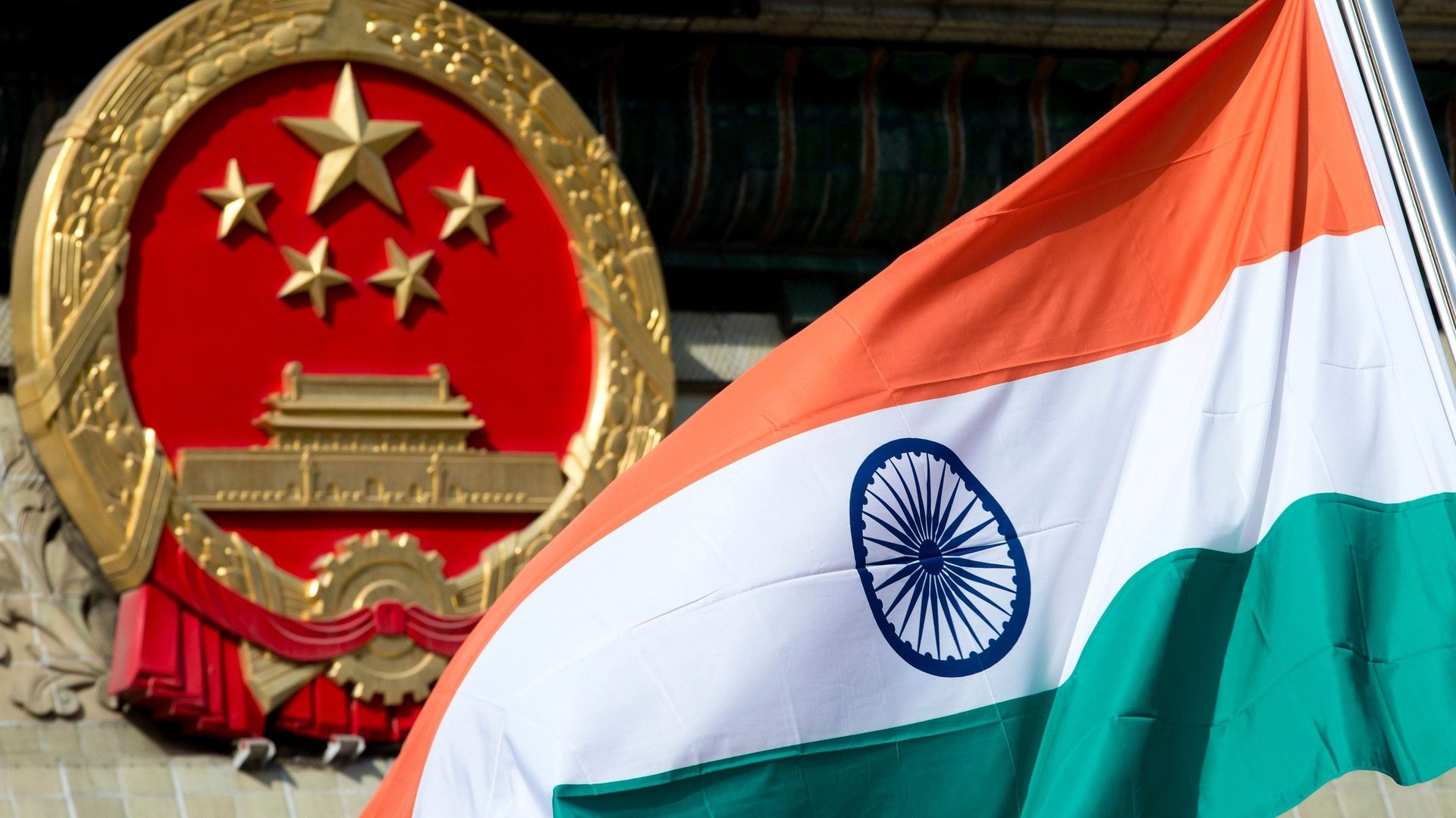China is luring Indian tech firms with market access and free rent
India’s trying to find ways to get into China’s $144 billion IT market.


India’s trying to find ways to get into China’s $144 billion IT market.
On May 27, an IT corridor was established between India and China to give Indian businesses a gateway into the neighbouring country’s thriving software market. NASSCOM, the Indian IT industry’s trade group, established a Sino-Indian Digital Collaborative Opportunities Plaza (SIDCOP) in the tech hub of Guiyang in southwest China.
During the launch of the corridor, Indian service providers and Chinese customers signed agreements worth around $6 billion. These pilot projects will be executed over the next year.
This is the second such initiative between India and China. The Dalian collaborative technology platform launched in December last year focused on internet-of-things (IoT). The Giuyang partnership will be centred around big data, said Gagan Sabharwal, senior director of global trade development at NASSCOM.
“China is very good in hardware and India is very good in software. This deal could show both countries how to amalgamate both these skills,” said Vidhya Shankar, executive director at Grant Thornton India LLP and former head of partnerships and alliances at NASSCOM’s 10,000 Startups initiative.
Indian startups can leverage the Guiyang deal by “working with hardware companies, even being incubated there to tap into the Chinese domestic market,” Shankar added. “They could even attract investors from there.” A slew of benefits, such as rent-free office space, are available for Indian startups looking to go east.
Matchmaking
India’s IT companies have been taking bites out of China’s IT pie for years now: Tata Consultancy Services (TCS) ranks among the top outsourcing firms in the mainland. In 2015, India’s second-largest IT services company, Infosys, opened its first overseas campus in China. Wipro, which has been in the Chinese market since 2004 (pdf), employs a mostly local workforce of 2,000 people there.
Yet, Indian players are present only in 10 Chinese cities and have hired just 25,000 people out of almost 1.4 billion. Small and medium enterprises (SMEs) have long faced many hurdles in making inroads. ”Unless you’re a specific size and have lot of years of experience, it’s hard to bid for private sector and public sector tenders,” Shankar said.
So far, smaller firms have mostly gravitated towards English-speaking countries with a large Indian diaspora, said Harish HV, an independent consultant who tracks India’s IT sector. “China is quite a different ball game and they (Indian firms) need help,” he told Quartz. ”There is a language issue, a culture issue, and therefore, a process issue.”
SIDCOP aims to resolve the language barrier by translating content between Indian and Chinese partners from English to Mandarin and vice versa through its artificial intelligence(AI)-driven platform.
A raw deal?
The promise of China comes at a time when existing markets are starting to lose their shine: The US is clamping down on H-1B visas, widely used by Indian techies, and the likes of the UK, Singapore, and New Zealand are slamming the brakes on work-related immigration. ”Companies have been trying to go to every other geography to try and diversify for years,” Harish HV said.
China is an attractive market; it spends top dollar on research and development, acquisitions, and mergers. At 11.2%, Chinese spending on IT grew twice as fast as the US’s last year. It is spending $5.5 billion on big data and analytics in 2018 alone.
Though this NASSCOM-led deal is good news on paper, India should be weary of becoming another outsourcing backyard for China, like it is for the US. ”It’s the age of startups today and India is already lagging far behind China in AI,” said Sanchit Vir Gogia, founder and CEO of Greyhound Research. “Should we co-create when China is already leaps and bounds ahead. Should we instead focus on lobbying domestically for our startups?”
Then, there’s also China’s notoriety for intellectual property theft, Gogia warned. Besides, the long-term sustainability of foreign firms there is still unclear, given that even behemoths like Google and Facebook had to retreat. “The fact is China is still a closed market,” he added. “And…India-China relations are not at their best.”